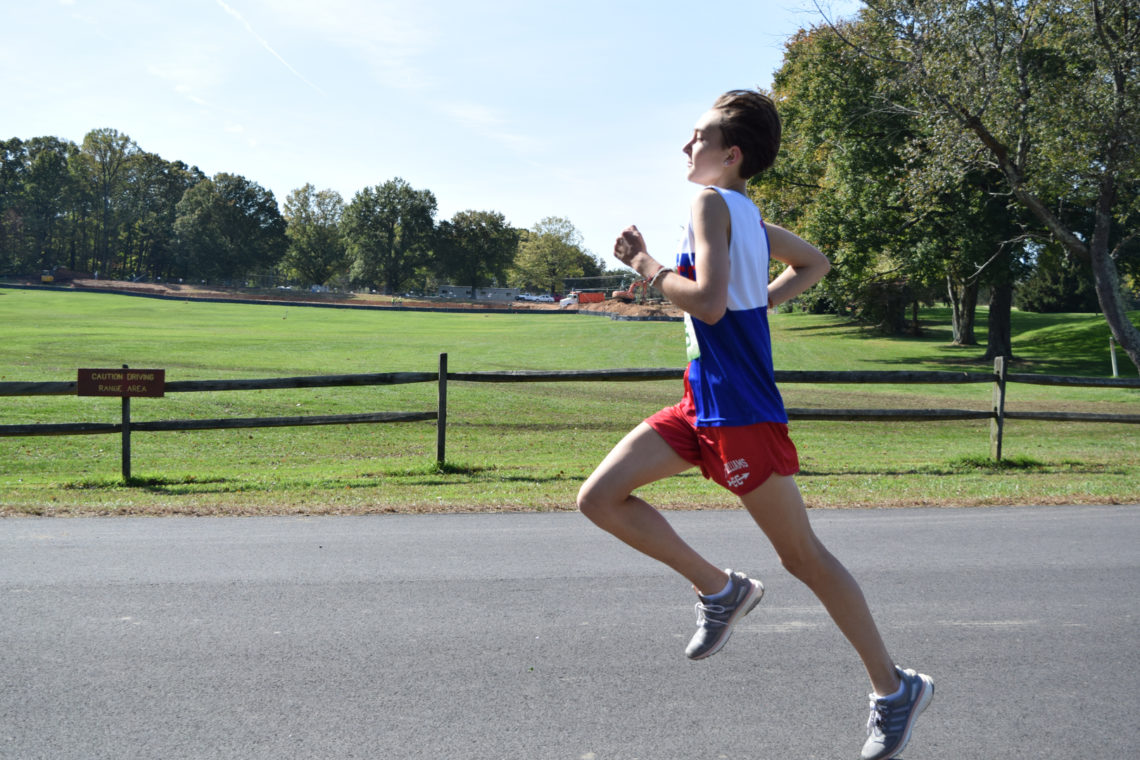How Cross Country Runs
Devin Kohout
For a sport that nearly 500,000 high school athletes participate in, Cross Country tends to be a competition not many have a full grasp on and fewer still follow. The sport, which winds its way through wooded trails and over broad fields, is not exactly spectator friendly as it is hard to see runners on every part of the course. It requires an exceptional amount of athleticism and ability to cope with weather since it is held outdoors over many surfaces. It also demands a degree of tactics to make the most of one’s stamina.
“It is much more than just running,” said Mike Hughes, Cross Country head coach for boys and girls. “The whole season is built around building your cardiovascular system, your strength, your power and your endurance.” This year marks Hughes’s 27th season coaching, 20 of which have been spent leading T.C.’s program.
Cross Country is a team sport, but not in a conventional way. Teams typically have an individual with the strength and stamina to shoot for the fastest times and the front of the pack finishes. But it is collective effort that sets teams apart. The sixth and seventh-position runners of a team are what Hughes calls “the pushers,” as they tend to be in the middle of the pack of runners. Their finishing position is crucial in the final standings.
From the sound of the gun to the sprint to the finish line, the back and forth of the race is “intense” and “exciting,” said senior Evan Larsen. Spectators and teammates roar as runners sprint from the starting line, while coaches race along the course to get a look at their athletes and shout instructions or encouragement. Parents gravitate to the finish line, hoping to catch a glimpse of their runners making a final move on opponents and cheer the runners to the finish.
Teams field ten runners, but only the top seven finishers of a team are accounted for in points. The overall scoring of Cross Country is a bit tricky to grasp, but once understood makes sense. Of the top seven runners on each team, their finishing positions give them points. The first runner to cross the line gets one point, second gets two, third gets three and so on all the way until the last of the top seven finishers for every team crosses the finish line, whatever the number of runners and teams. Points from each individual are added up to get the team’s point total. Similar to golf, the team with the fewest points wins.
High school athletes run five kilometers (3.1 miles) events. Although the distance is relatively consistent, the routes are never the same. Parks, golf courses and trails make up most race courses, and they often feature up and down-hill runs, sharp turns and zigs-zags, usually ending with an open 150-yard sprint toward the finish line.
Training sessions are geared to get runners accustomed to these race features. It is all about how you prepare, Hughes explains. “It takes a long time to develop the endurance to get a value out of training,” he said. Despite laying a solid foundation through diet, stretching, pace training, and other tactics, becoming successful in the sport is not an overnight process. “You will not become good at endurance running right away. It takes time and determination.”
During the season, the big races are weekend events. All teams throw out their top athletes to run, and look to perform as best they can. Most times, these weekend events are Regional invitationals which are the most competitive events during the regular season. Smaller events, like the District meets, tend to be less important, with teams not too worried about how they perform. These races are scheduled mid-week to allow athletes to have recovery time.
On September 25, T.C. Cross Country competed at a smaller district event at Lee District Park in Fairfax. The 5km sent runners over all surface conditions, including flat grass or hilly sections, segments across pavement, and tight and twisty trails. Smaller events, such as this one, offer a chance for teams to rest their top athletes and give novice runners an opportunity to show what they can do.
Cross Country is a competitive, tactical, demanding sport that many believe deserves more recognition. Running long distance may not be for everyone, but athletes and coaches deserve a tremendous amount of respect for the hard work, time and effort they put into it.
“It gives them a chance to check their ability to control their destiny,” said Hughes. “You’ll find that whatever effort you put in is a direct proportion to the reward you get out.”



